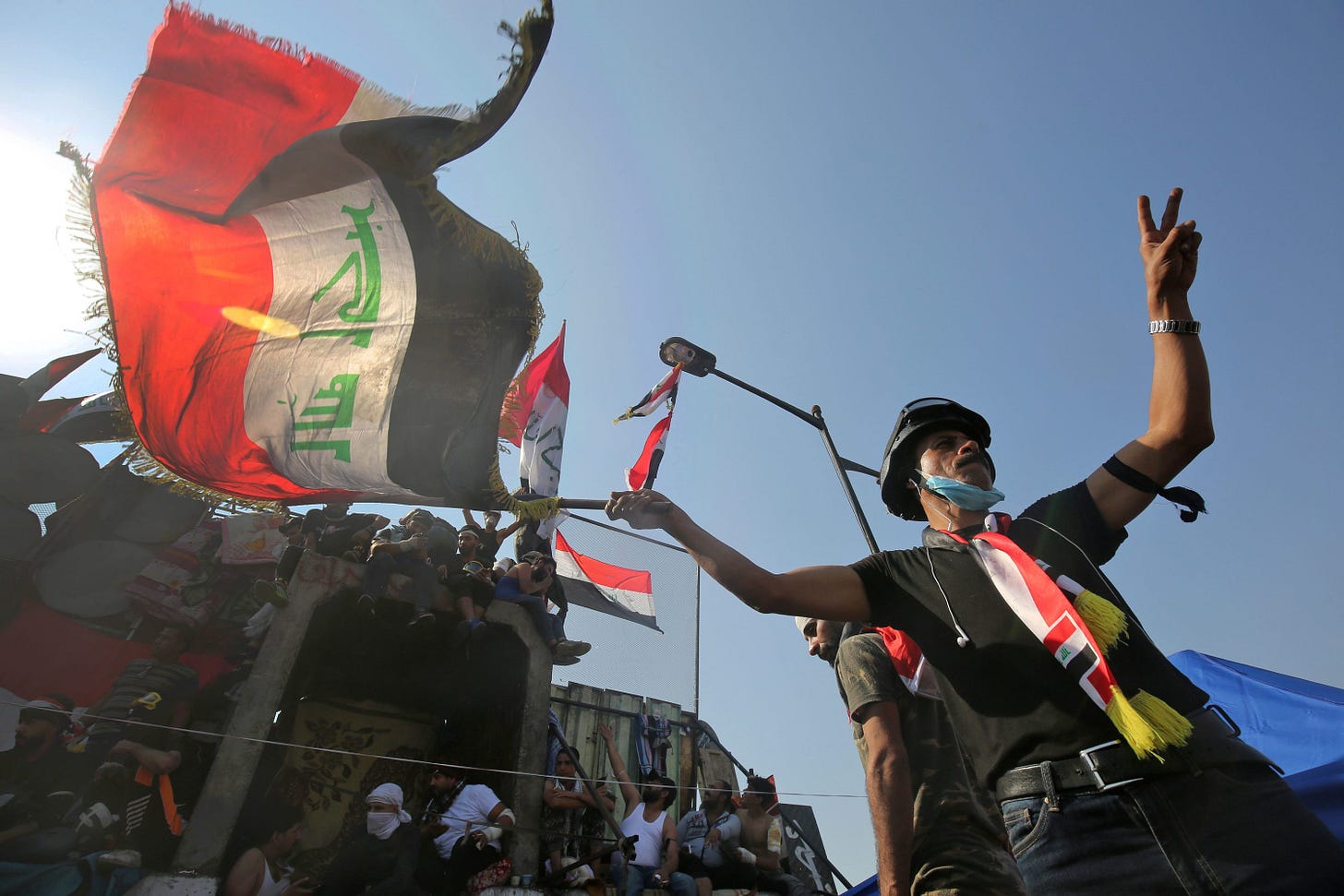Iran's Order in the Middle East is Beginning to Crack

With apologies to The New York Times' Thomas Friedman, author of the 1989 opus From Beirut to Jerusalem, the future of the Middle East is now being forged between Beirut and Baghdad. It is in these capitals today where popular uprisings against Iranian power have taken hold. If Iran's hard-won empire is to be preserved, these uprisings will either be assimilated and quietly “turned” by the ruling order, or, as has been the case in neighboring Syria, quelled by brute force.
In the first decade of this century, the bellicose surrogates of the Islamist regime in Iran proved adroit in filling the power vacuums that proliferated in the Middle East. In Lebanon after the Cedar Revolution, Syria officially withdrew its armed forces and intelligence agents that stifled Lebanese sovereignty, but Hezbollah, the "party of god" that Assad equipped with Iranian arms, endured. After the decapitation of Saddam Hussein's despotism in Iraq, the Iranians sponsored a massive insurgency of Shia terrorists and guerrillas who infiltrated and undermined the free Iraqi government. In both lands, de facto statelets dedicated to the Khomeinist revolution were carved out in the south and in parts of the capital.
Today, Iraq and Lebanon groan under elaborate systems of economic mismanagement and elite corruption imposed and sustained by Persian might and largesse. Despite local and democratic trappings, the national governments in Beirut and Baghdad have long been a mere satrap of the black-robed mullah caste in Tehran.
As the Lebanese and Iraqi populations have learned anew in recent weeks, this anointed authority--exercised through the velayat-e faqui, or rule of the guardians--is at once unelected and unaccountable (including in its own homeland). Walid Jumblatt, the leader of the Lebanon's Progressive Socialist Party and also its Druze community, has long perceived that the solution to the region's troubles lies in defanging the "black vampire" in Tehran, the fulcrum of the Shia empire of "resistance."
The sprawling, raucous protests across Iraq and Lebanon have implicitly signaled opposition to Iran's political and military power structure that, overtly and covertly, have created the conditions for rampant misrule. Although it remains acutely dangerous for any protester, let alone any public figure, to make that point explicitly, it nonetheless follows that these historic uprisings have laid bare the full measure of Iran's imperial overstretch.
To recapitulate: In Iraq, demonstrations broke out on October 1 following growing criticism of endemic corruption and unemployment. The proximate cause of the protest was Prime Minister Adel Abdul Mahdi firing a popular general, Abdul-Wahab al-Saadi, from his post as deputy commander of the Counter-Terrorism Service. Public solidarity with a general renowned for his non-sectarian credentials soon escalated into calls to overthrow the government and halt Iranian meddling in internal Iraqi affairs.
A few weeks later, Lebanon was ready to erupt. Tensions had built up after months of public disquiet with Prime Minister Saad Hariri’s austerity budget and Lebanon's ruinous economic plight. On October 17 the government's proposal to impose a tax on the popular messaging and voice service WhatsApp sparked demonstrations and strikes across the country, from Sunni-dominated Tripoli in the north to Shia-dominated Tyre in the south. The protests have been distinguished by their resolutely non-sectarian appeal for a transition to a technocratic government.
After a brief interlude, it became clear that these displays of “sedition”--as the protests were labeled by senior adviser to Iran’s supreme leader Yahya Rahim Safavi--would not be tolerated. Repression became the order of the day. The demonstrators were bullied and menaced by state and non-state actors. Violence has been most severe in Iraq where Iranian Revolutionary Guard Corps Quds Force commander Suleimani arrived hours after the protests began. Militias accused by Iraqi security sources of taking orders from the Iran-linked Popular Mobilization Units (PMU) have led a bloody crackdown, killing hundreds. In Lebanon, where Iran's power is less blatant, Hezbollah and Amal brigands have been harassing demonstrators in Martyrs' Square and elsewhere. “The security forces don’t want to deal with the protests formally, so they do it informally, with thugs,” says Ali Hashem, a Lebanese commentator.
In the context of the Trump administration's "maximum pressure campaign" against Iran, the choice before Supreme Leader Ayatollah Ali Khamenei is a daunting one. If the Islamic Republic expends its scarce resources to shore up proxy forces in the Levant and Mesopotamia, it further incurs the risk of sparking a revolt at home. (When Iranians took to the streets last year to protest against the regime, they chanted directly against their government's revolutionary imperialism: “Death to Palestine,” “No to Gaza, no to Lebanon” and “Leave Syria and think of us.”) The alternative to this acute danger is for Tehran to abandon its vulnerable allies and their strategic foothold in the region, as well as to invite a rebellion not from the people of Iran but the hard-liners within the regime.
According to an Israeli estimate, the Islamic Republic’s long involvement and deep investment in the savage war in Syria has cost Iran $16 billion. The best hope of the long-suffering Lebanese and Iraqi people is that, at last, Tehran's theocratic and imperial project is running out of cash.
Otherwise, the only currency to avail against Iran's counterrevolutionary empire will be paid in blood.


